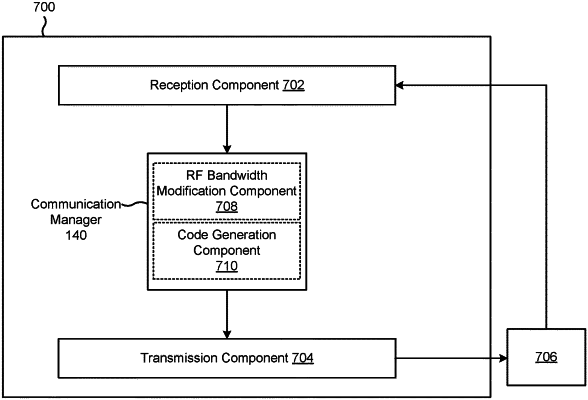| CPC H04W 72/0453 (2013.01) [H04L 5/001 (2013.01); H04L 5/0098 (2013.01); H04W 72/231 (2023.01)] | 26 Claims |

|
1. A user equipment (UE) for wireless communication, comprising:
a processing system that includes one or more processors and one or more memories coupled with the one or more processors, the processing system configured to cause the UE to:
receive, from a network entity, configuration information indicating a set of component carriers (CCs) associated with the UE;
store a set of codes associated with the set of CCs and associated with causing a radio frequency (RF) bandwidth to be modified to different ranges of frequencies;
receive, from the network entity, a message that activates or deactivates one or more CCs of the set of CCs; and
communicate, with the network entity, using one or more activated CCs of the set of CCs over the RF bandwidth that is tuned to one or more frequency ranges associated with the one or more activated CCs using a code, of the set of codes, in response to the message.
|